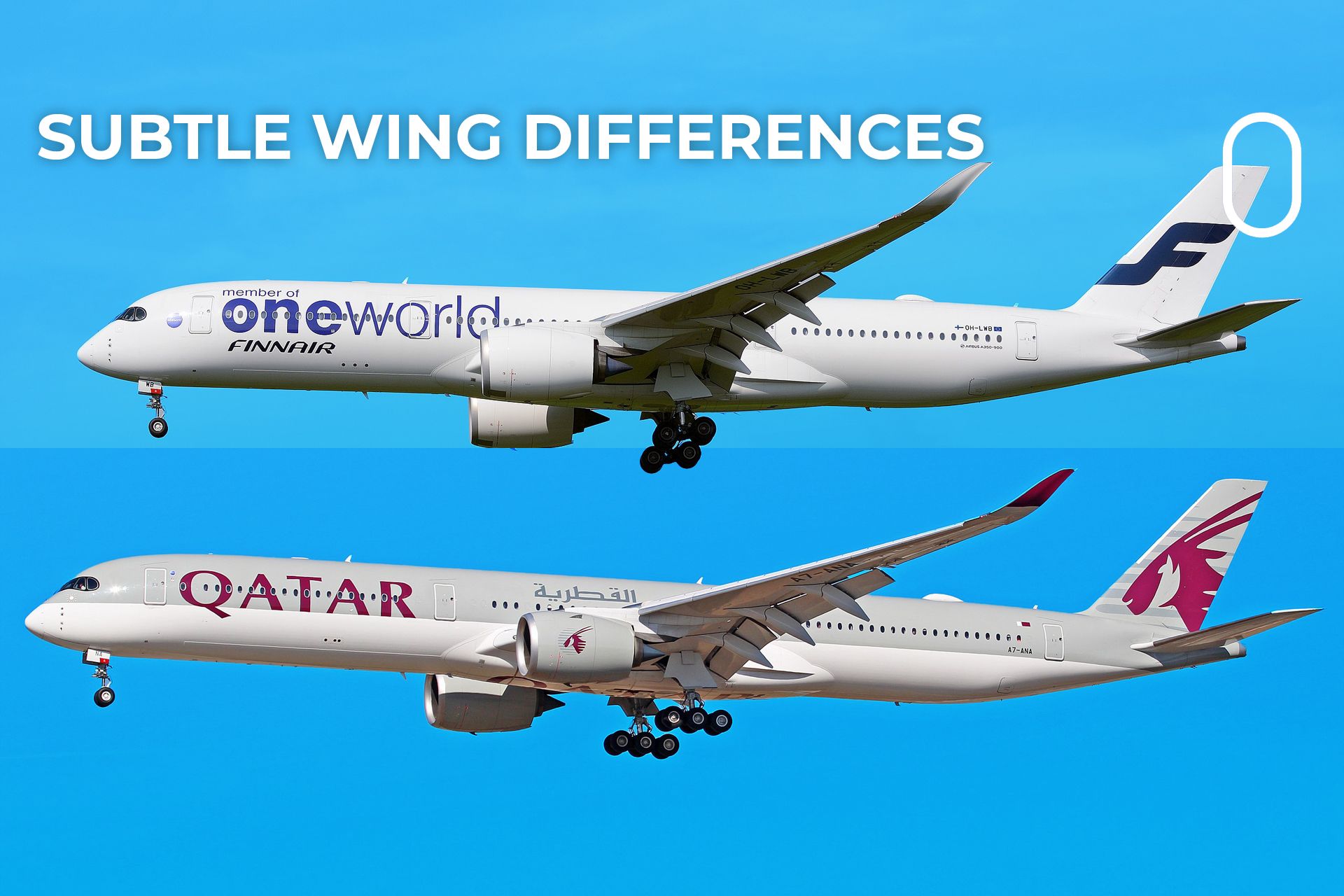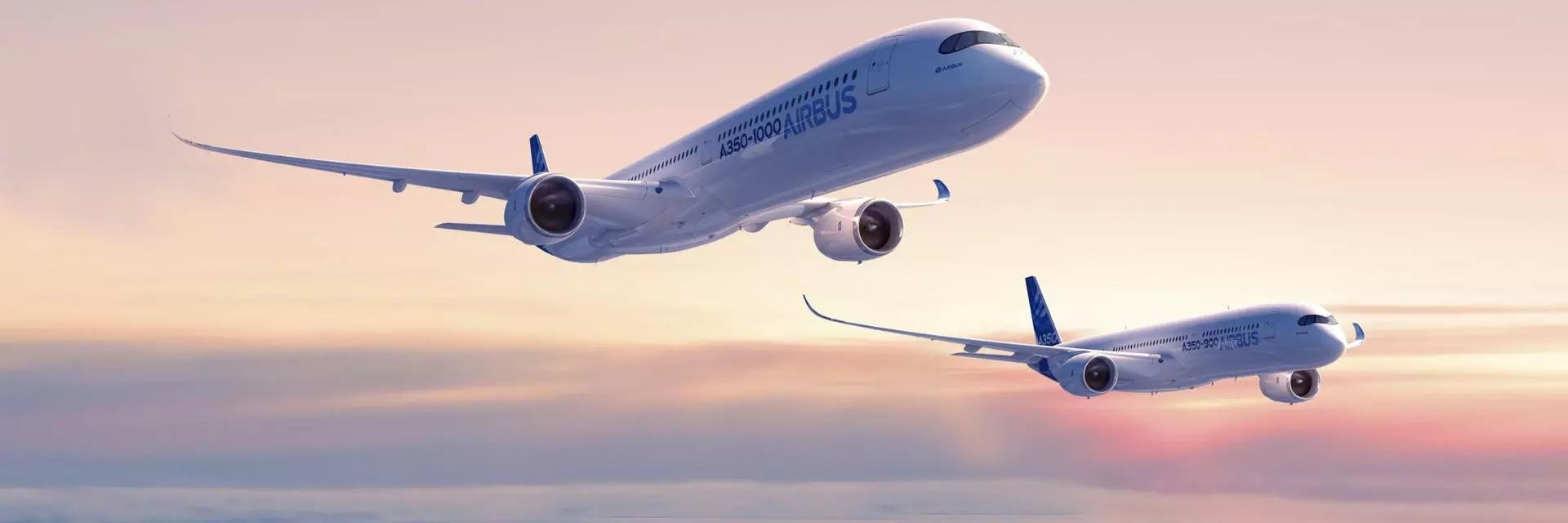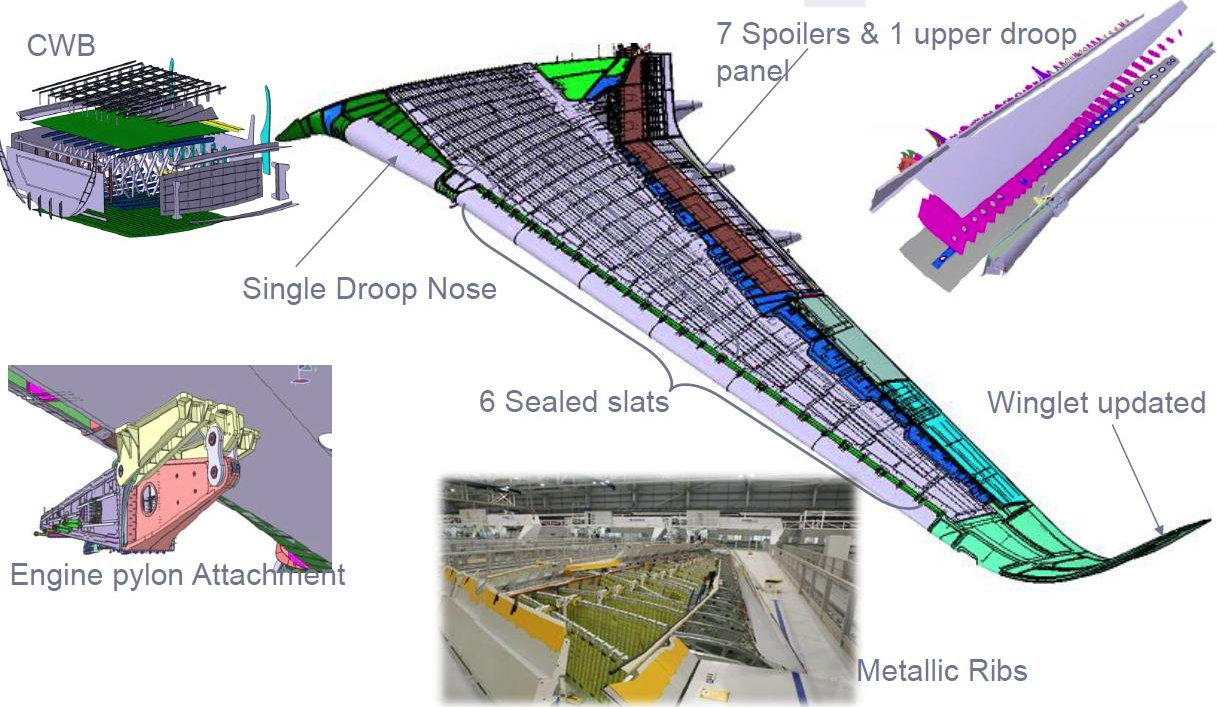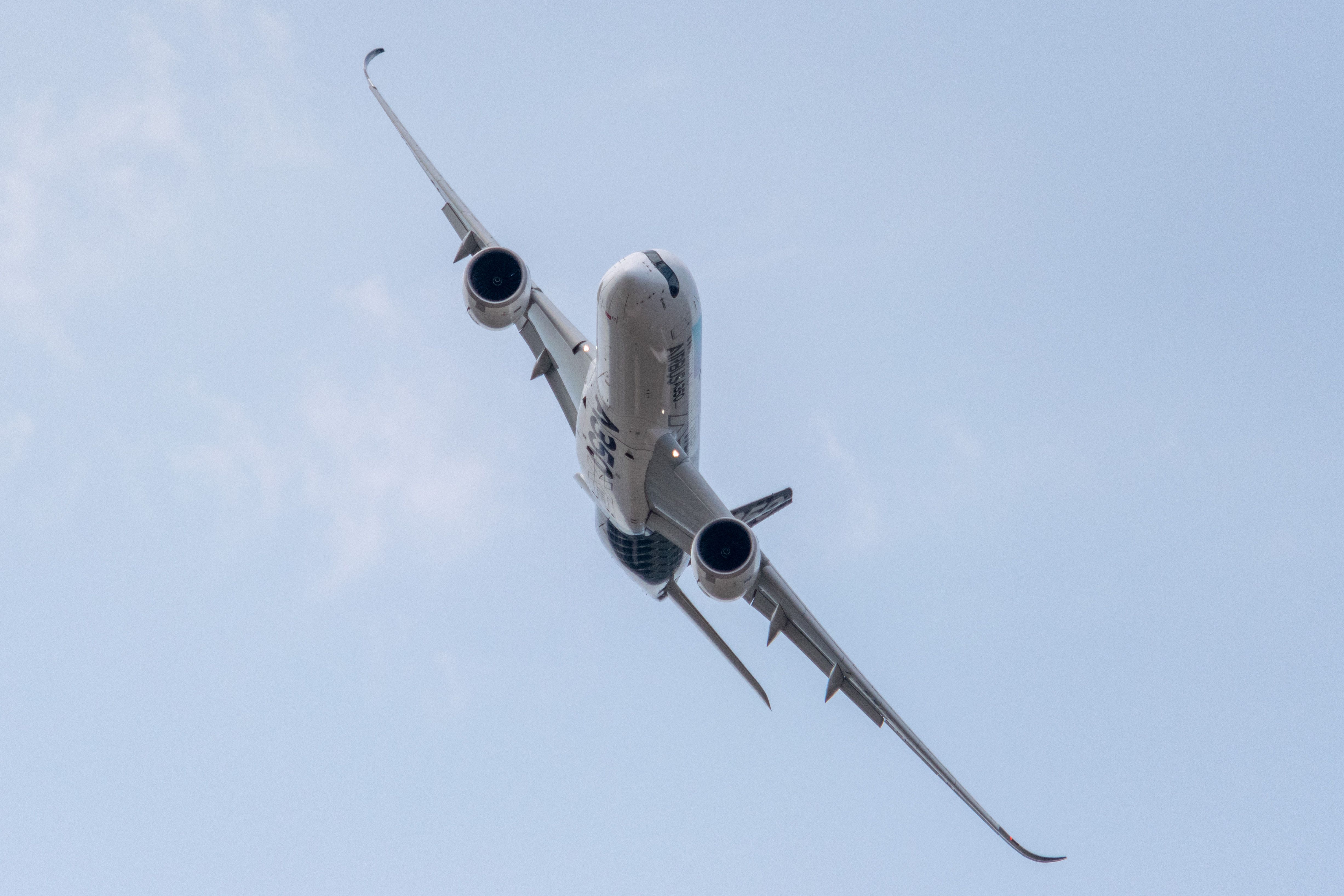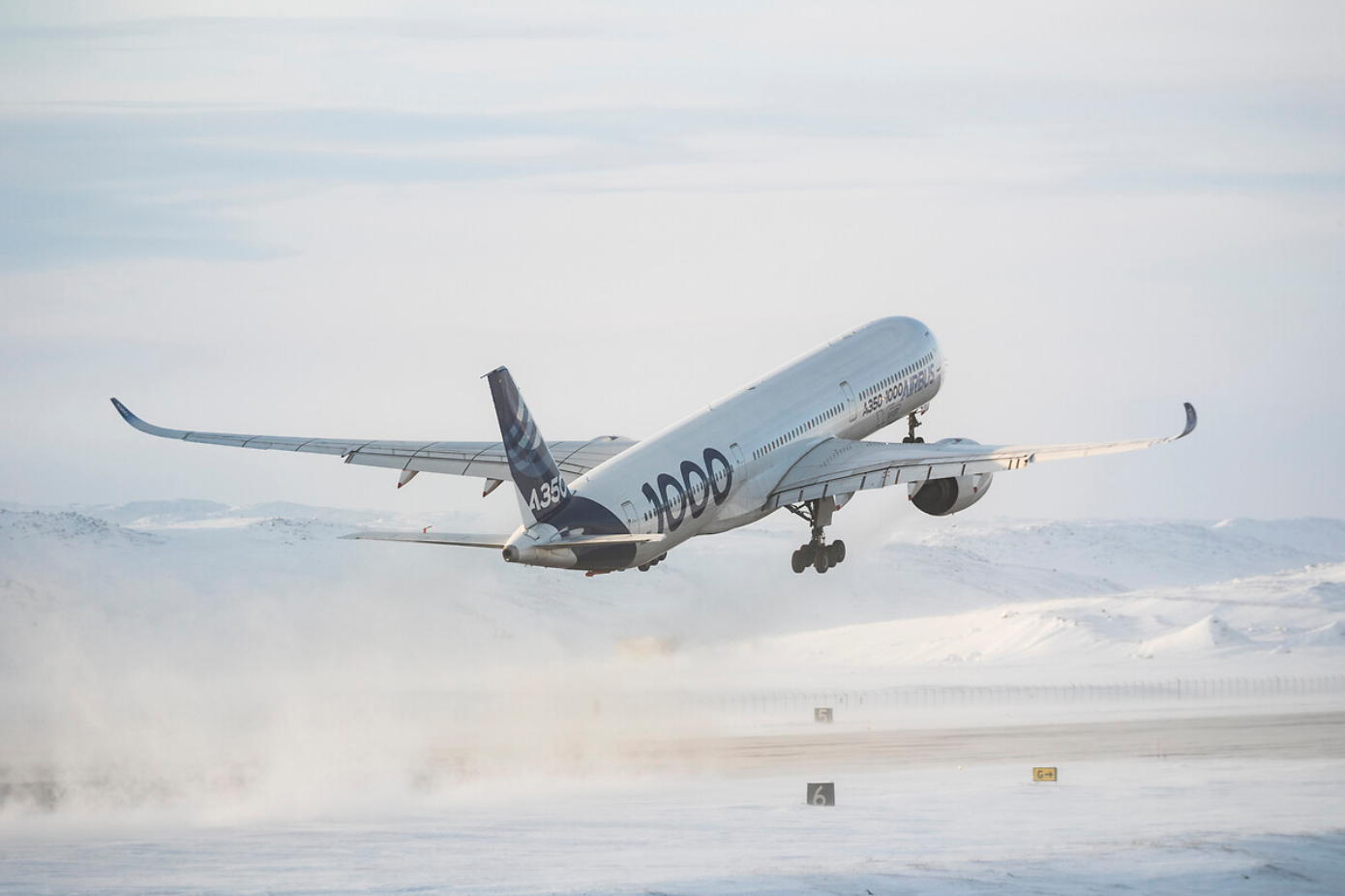Summary
- The Airbus A350-1000 can accommodate 369 passengers, 54 more than the A350-900 variant.
- A larger design allows the A350-1000 to have a more extensive range and maximum takeoff weight.
- The A350-1000’s improved wing design enhances lift generation and efficiency, crucial for takeoff.
The Airbus A350 is a twin-engine widebody aircraft family developed by the European planemaker Airbus in response to the Boeing 787 Dreamliner. Airbus offers two significant variants of the A350 family, the A350-900 and the A350-1000. The Airbus A350-1000 is approximately seven meters longer (73.8 m compared to 66.8 m) than the A350-900.
Despite the larger size and weight of the A350-1000, Airbus deliberately limited the wingspan for certification requirements. However, the trailing edge of the -1000’s wing is extended to achieve greater lift.
The two A350 variants
The -1000 can accommodate 369 passengers in a typical two-class configuration compared to the 315-passenger capacity of the -900 variant. With a range of approximately 8,100 NM (15,000 km), the -900 has a maximum takeoff weight (MTOW) of 617,300 lbs (283 tonnes). On the other hand, the longer A350-1000 has a maximum range of 8,700 NM (16,100 km) and an MTOW of 703,200 lb (319 tonnes).
|
Airbus A350 |
-900/-900ULR |
-1000 |
|---|---|---|
|
Typical seating |
315 |
369 |
|
Overall length |
66.8 m (219.2 ft) |
73.79 m (242.1 ft) |
|
Wingspan |
64.75 m (212.43 ft), 31.9° sweep |
|
|
Aspect ratio |
9.49 |
9.03 |
|
Wing area |
442 m2 (4,760 sq ft) |
464.3 m2 (4,998 sq ft) |
|
Overall height |
17.05 m (55 ft 11 in) |
17.08 m (56 ft 0 in) |
|
Fuselage |
5.96 m (19.6 ft) width, 6.09 m (19.98 ft) height |
|
|
Cabin width |
5.61 m (18 ft 5 in) with 18-inch-wide (46 cm), 9-abreast seating 5.71 m (18 ft 9 in) with 16.8-inch-wide (43 cm), 10-abreast seating |
|
Photo: Airbus
Greater MTOW means more lift is required for the aircraft to become airborne and fly safely. Since lift is a function of wing area, the A350-1000 has a slightly larger wing area of 464.3 square meters compared to the 442 square meters on the shorter A350-900 variant.
|
Airbus A350 |
-900/-900ULR |
-1000 |
|---|---|---|
|
MTOW |
283 t (623,908 lb) ULR: 280 t (620,000 lb) |
322 t (710,000 lb) |
|
Max. payload |
53.3 t (118,000 lb) 45.9–56.4 t (101,300–124,300 lb) |
67.3 t (148,000 lb) |
|
Fuel capacity |
140.8 m3 (37,200 US gal) 110.5 t (244,000 lb) ULR: 170 m3 (44,000 US gal) |
158.8 m3 (42,000 US gal) 124.65 t (274,800 lb) |
|
MEW |
115.7 t (255,075 lb) |
129 t (284,000 lb) |
|
Engines (2×) |
Rolls-Royce Trent XWB |
|
|
Max. thrust (2x) |
84,200 lbf (374.5 kN) |
97,000 lbf (431.5 kN) |
|
Cruise speed |
Mach 0.85 (488 kn; 903 km/h; 561 mph) typical Mach 0.89 (513 kn; 950 km/h; 591 mph) max. |
|
|
Range |
8,300 NM (15,372 km; 9,600 mi) ULR: 9,700 NM (17,964 km; 11,163 mi) |
8,900 NM (16,500 km; 10,200 mi) |
|
Service ceiling |
43,100 ft (13,100 m) |
41,450 ft (12,630 m) |
The A350-1000 wing
Lift-induced drag is a function of the aircraft wingspan. Interestingly, both variants of the A350 share the same wingspan of 212.43 ft (64.75 m). While aircraft with a large wingspan generate relatively less induced drag, Airbus had to limit their wingspans to the ICAO Aerodrome Reference Code E (52–65 m) to comply with airport limitations. Notably, the Code E limit applied to the A350 is the same as the Airbus A330/A340 and Boeing’s 777 and 787.
Image: Airbus
The trailing edge of the -1000’s wing is extended to slightly increase its overall wing area. This determines the amount of lift produced per square unit of the wing surface. The A350-1000 wing is modified to generate the required maximum takeoff lift coefficient. The leading edge has a 12-inch (30 cm) extension to the inboard sections of the fixed edge.
Photo: Tom Boon | Simple Flying
The extension is sufficient to compensate for the aircraft’s additional payload and range. The leading edge extension is one of many design modifications the -1000 variant has seen. Each wing of the Airbus A350 is a carbon composite structure. The A350-1000 upper wing skins are one of the largest single parts made from carbon fiber composites.
Designed and developed at the Airbus Bristol facility, the high-performance wings of the A350-1000 make the plane faster, more fuel-efficient, and quieter. Moreover, the droop-nose leading edge devices and new adaptive dropped-hinge flaps enable greater fuel efficiency at low speeds. The wing profile can be optimized during flight for better load control and operational efficiency at higher speeds.
Photo: Airbus
The advanced dropped-hinge flap, similar to that of the A380, permits the gap between the trailing edge and the flap to be closed with the spoiler. Wing loading is continuously optimized for specific speeds and gusts to reduce fuel burn. Longitudinal load control is managed through the variable camber system, where inboard and outboard flaps deflect in conjunction. The lateral load is handled by deflecting the inboard and outboard flaps differentially.
The design provides optimized lift distribution over the wingspan while carefully catering to the lift-induced drag. While wing extensions (flaps) assist at low speeds by increasing the surface area and lift, the wing-wetted area provides optimal performance in cruise conditions.

